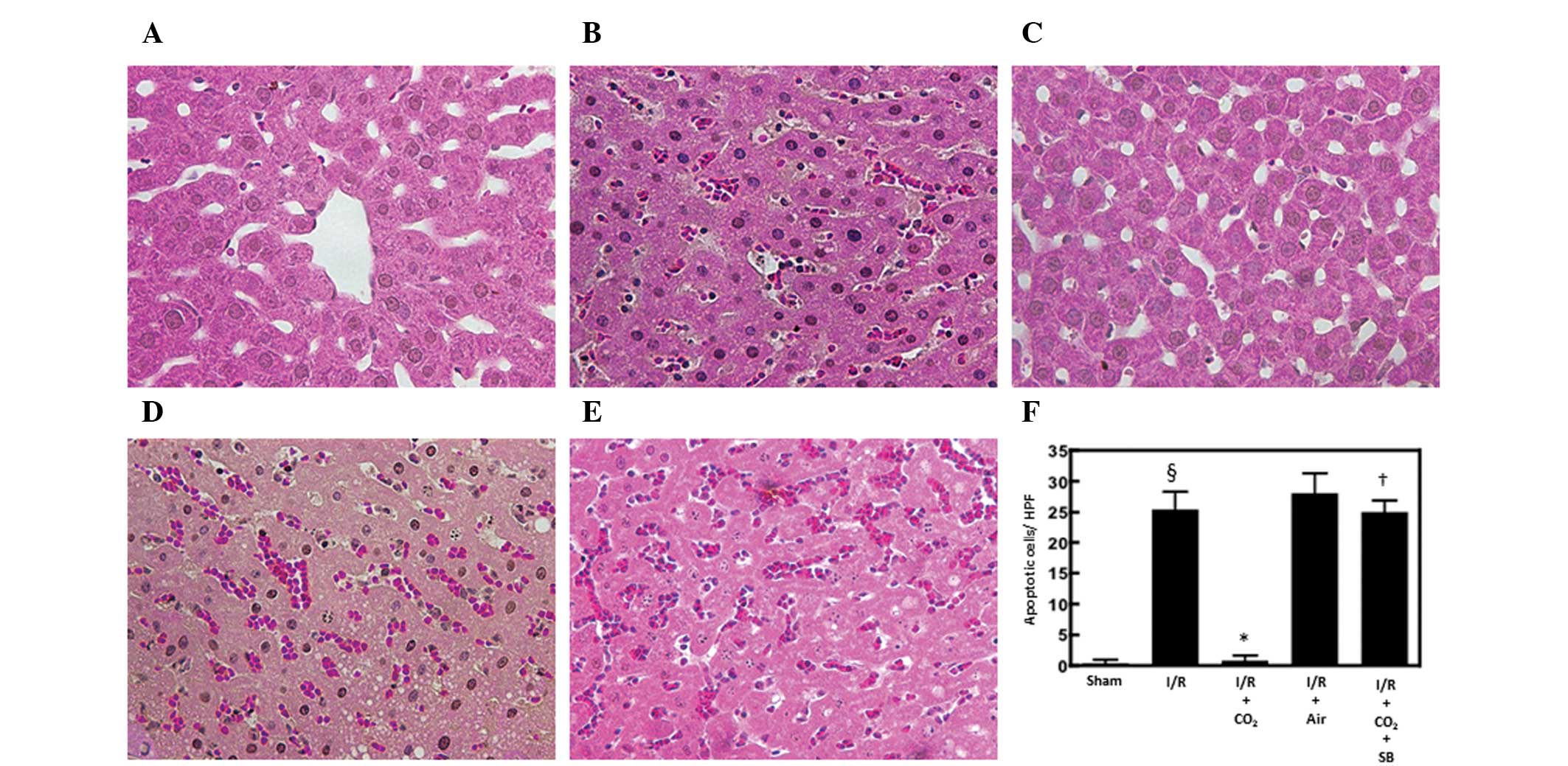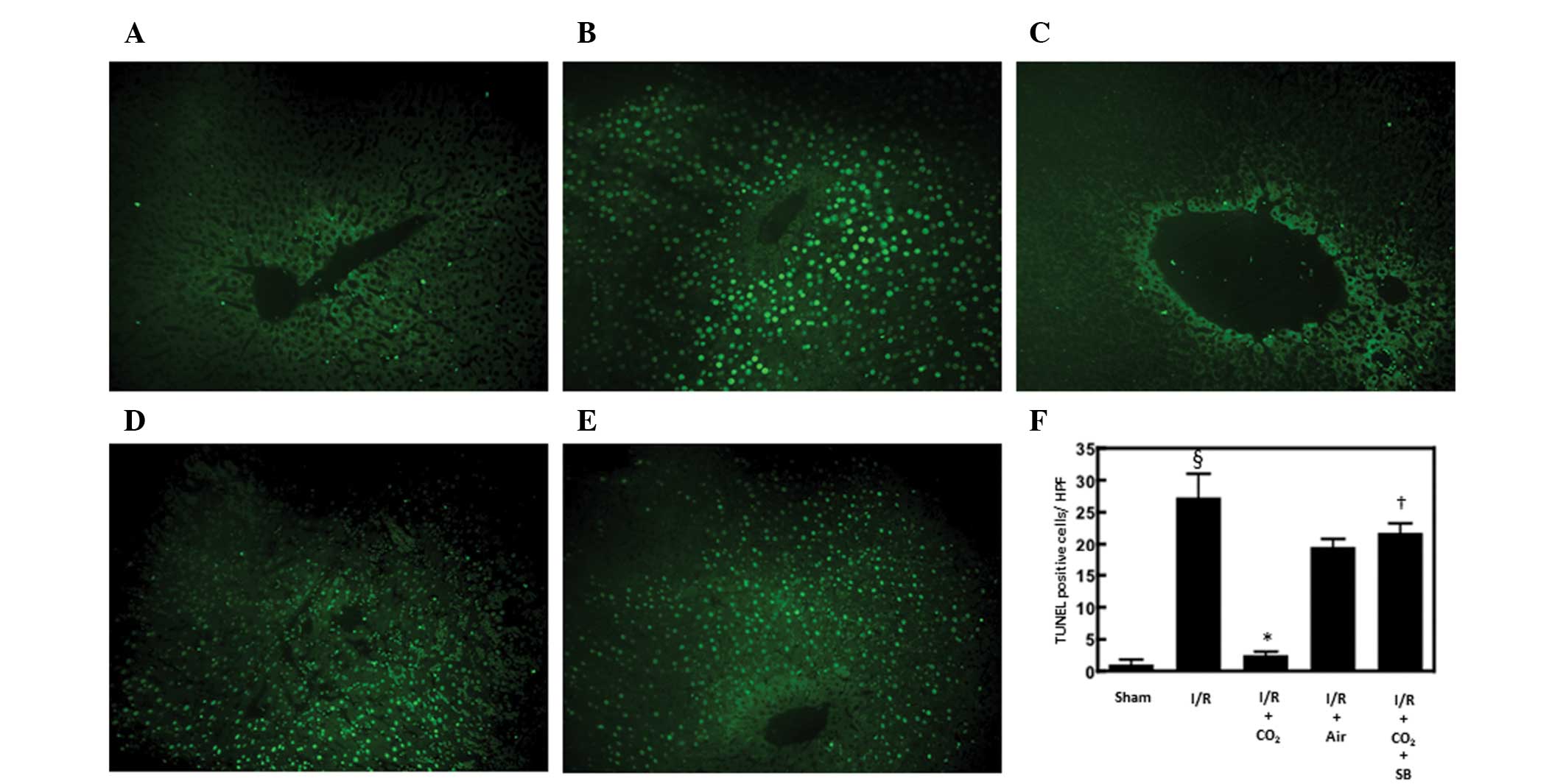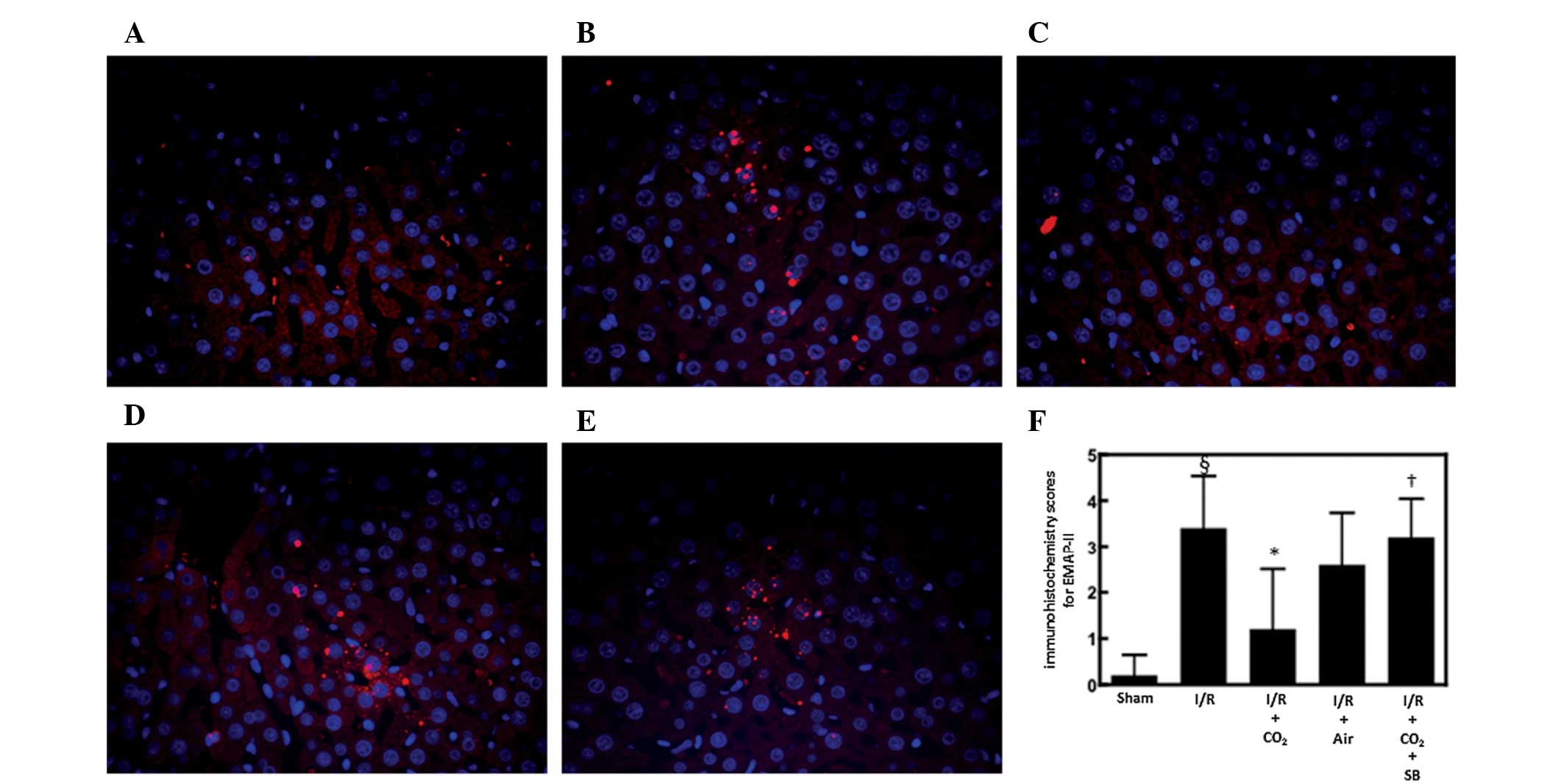|
1
|
Mealy K, Gallagher H, Barry M, Lennon F,
Traynor O and Hyland J: Physiological and metabolic responses to
open and laparoscopic cholecystectomy. Br J Surg. 79:1061–1064.
1992. View Article : Google Scholar : PubMed/NCBI
|
|
2
|
Zmora O, Hashavia E, Munz Y, Khaikin M,
Shabtai M, Ayalon A, Dinur L and Rosin D: Laparoscopic colectomy is
associated with decreased postoperative gastrointestinal
dysfunction. Surg Endosc. 23:87–89. 2009. View Article : Google Scholar : PubMed/NCBI
|
|
3
|
Redmond HP, Watson RW, Houghton T, Condron
C, Watson RG and Bouchier-Hayes D: Immune function in patients
undergoing open vs laparoscopic cholecystectomy. Arch Surg.
129:1240–1246. 1994. View Article : Google Scholar : PubMed/NCBI
|
|
4
|
Vittimberga FJ Jr, Foley DP, Meyers WC and
Callery MP: Laparoscopic surgery and the systemic immune response.
Ann Surg. 227:326–334. 1998. View Article : Google Scholar : PubMed/NCBI
|
|
5
|
Mann C, Boccara G, Grevy V, Navarro F,
Fabre JM and Colson P: Argon pneumoperitoneum is more dangerous
than CO2 pneumoperitoneum during venous gas embolism.
Anesth Analg. 85:1367–1371. 1997.PubMed/NCBI
|
|
6
|
Araújo Filho I, Honorato Sobrinho AA, Rego
AC, Garcia AC, Fernandes DP, Cruz TM, Costa TC and Medeiros AC:
Influence of laparoscopy and laparotomy on gasometry, leukocytes
and cytokines in a rat abdominal sepsis model. Acta Cir Bras.
21:74–79. 2006.PubMed/NCBI
|
|
7
|
Hanly EJ, Fuentes JM, Aurora AR, Bachman
SL, De Maio A, Marohn MR and Talamini MA: Carbon dioxide
pneumoperitoneum prevents mortality from sepsis. Surg Endosc.
20:1482–1487. 2006. View Article : Google Scholar : PubMed/NCBI
|
|
8
|
Pitombo MB, Lupi OH, Gomes RN, Amâncio R,
Refinetti RA, Bozza PT and Castro-Faria-Neto HC: Inflammatory
response and bacterial dissemination after laparotomy and abdominal
CO2 insufflation in a murine model of peritonitis. Surg
Endosc. 20:1440–1447. 2006. View Article : Google Scholar : PubMed/NCBI
|
|
9
|
Okajima K and Harada N: Regulation of
inflammatory responses by sensory neurons: molecular mechanism(s)
and possible therapeutic applications. Curr Med Chem. 13:2241–2251.
2006. View Article : Google Scholar : PubMed/NCBI
|
|
10
|
Maggi CA and Meli A: The sensory-efferent
function of capsaicin-sensitive sensory neurons. Gen Pharmacol.
19:1–43. 1988. View Article : Google Scholar : PubMed/NCBI
|
|
11
|
Caterina MJ, Schumacher MA, Tominaga M,
Rosen TA, Levine JD and Julius D: The capsaicin receptor: a
heat-activated ion channel in the pain pathway. Nature.
389:816–824. 1997. View
Article : Google Scholar
|
|
12
|
Kawai M, Harada N, Takeyama H and Okajima
K: Neutrophil elastase contributes to the development of
ischemia/reperfusion-induced liver injury by decreasing the
production of insulin-like growth factor-I in rats. Transl Res.
155:294–304. 2010. View Article : Google Scholar
|
|
13
|
Daemen MA, van ‘t Veer C, Denecker G,
Heemskerk VH, Wolfs TG, Clauss M, Vandenabeele P and Buurman WA:
Inhibition of apoptosis induced by ischemia-reperfusion prevents
inflammation. J Clin Invest. 104:541–549. 1999. View Article : Google Scholar : PubMed/NCBI
|
|
14
|
Jaeschke H: Molecular mechanisms of
hepatic ischemia-reperfusion injury and preconditioning. Am J
Physiol Gastrointest Liver Physiol. 284:G15–G26. 2003.PubMed/NCBI
|
|
15
|
Massip-Salcedo M, Roselló-Catafau J,
Prieto J, Avila MA and Peralta C: The response of the hepatocyte to
ischemia. Liver Int. 27:6–16. 2007. View Article : Google Scholar : PubMed/NCBI
|
|
16
|
Holzer P: The pharmacological challenge to
tame the transient receptor potential vanilloid-1 (TRPV1)
nocisensor. Br J Pharmacol. 155:1145–1162. 2008. View Article : Google Scholar : PubMed/NCBI
|
|
17
|
West MA, Hackam DJ, Baker J, Rodriguez JL,
Bellingham J and Rotstein OD: Mechanism of decreased in vitro
murine macrophage cytokine release after exposure to carbon
dioxide: relevance to laparoscopic surgery. Ann Surg. 226:179–190.
1997. View Article : Google Scholar
|
|
18
|
Akiba Y, Ghayouri S, Takeuchi T, Mizumori
M, Guth PH, Engel E, Swenson ER and Kaunitz JD: Carbonic anhydrases
and mucosal vanilloid receptors help mediate the hyperemic response
to luminal CO2 in rat duodenum. Gastroenterology.
131:142–152. 2006. View Article : Google Scholar : PubMed/NCBI
|
|
19
|
Prabhakar E and Lawson SN: The
electrophysiological properties of rat primary afferent neurones
with carbonic anhydrase activity. J Physiol. 482:609–622. 1995.
View Article : Google Scholar : PubMed/NCBI
|
|
20
|
Varga A, Németh J, Szabó A, McDougall JJ,
Zhang C, Elekes K, Pintér E, Szolcsányi J and Helyes Z: Effects of
the novel TRPV1 receptor antagonist SB366791 in vitro and in vivo
in the rat. Neurosci Lett. 385:137–142. 2005. View Article : Google Scholar : PubMed/NCBI
|
|
21
|
Hayashi H, Chaudry IH, Clemens MG and Baue
AE: Hepatic ischemia models for determining the effects of
ATP-MgCl2 treatment. J Surg Res. 40:167–175. 1986.
View Article : Google Scholar : PubMed/NCBI
|
|
22
|
Jaeschke H, Farhood A, Bautista AP,
Spolarics Z, Spitzer JJ and Smith CW: Functional inactivation of
neutrophils with a Mac-1 (CD11b/CD18) monoclonal antibody protects
against ischemia-reperfusion injury in rat liver. Hepatology.
17:915–923. 1993. View Article : Google Scholar : PubMed/NCBI
|
|
23
|
Nakayama T, Harada N, Asano M, Nomura N,
Saito T, Mishima A and Okajima K: Atrial natriuretic peptide
reduces ischemia/reperfusion-induced spinal cord injury in rats by
enhancing sensory neuron activation. J Pharmacol Exp Ther.
322:582–590. 2007. View Article : Google Scholar
|
|
24
|
Soeda J, Miyagawa S, Sano K, Masumoto J,
Taniguchi S and Kawasaki S: Cytochrome c release into cytosol with
subsequent caspase activation during warm ischemia in rat liver. Am
J Physiol Gastrointest Liver Physiol. 281:G1115–G1123.
2001.PubMed/NCBI
|
|
25
|
Martin EJ and Forkert PG: Evidence that
1,1-dichloroethylene induces apoptotic cell death in murine liver.
J Pharmacol Exp Ther. 310:33–42. 2004. View Article : Google Scholar
|
|
26
|
Kelly KJ, Sandoval RM, Dunn KW, Molitoris
BA and Dagher PC: A novel method to determine specificity and
sensitivity of the TUNEL reaction in the quantitation of apoptosis.
Am J Physiol Cell Physiol. 284:C1309–C1318. 2003. View Article : Google Scholar
|
|
27
|
Gavrieli Y, Sherman Y and Ben-Sasson SA:
Identification of programmed cell death in situ via specific
labeling of nuclear DNA fragmentation. J Cell Biol. 119:493–501.
1992. View Article : Google Scholar : PubMed/NCBI
|
|
28
|
Chaerkady R, Harsha HC, Nalli A, Gucek M,
Vivekanandan P, Akhtar J, Cole RN, Simmers J, Schulick RD, Singh S,
Torbenson M, Pandey A and Thuluvath PJ: A quantitative proteomic
approach for identification of potential biomarkers in
hepatocellular carcinoma. J Proteome Res. 7:4289–4298. 2008.
View Article : Google Scholar : PubMed/NCBI
|
|
29
|
Barnes DM, Harris WH, Smith P, Millis RR
and Rubens RD: Immunohistochemical determination of oestrogen
receptor: comparison of different methods of assessment of staining
and correlation with clinical outcome of breast cancer patients. Br
J Cancer. 74:1445–1451. 1996. View Article : Google Scholar
|
|
30
|
Kao J, Fan YG, Haehnel I, Brett J,
Greenberg S, Clauss M, Kayton M, Houck K, Kisiel W, Seljelid R, et
al: A peptide derived from the amino terminus of
endothelial-monocyte-activating polypeptide II modulates
mononuclear and polymorphonuclear leukocyte functions, defines an
apparently novel cellular interaction site, and induces an acute
inflammatory response. J Biol Chem. 269:9774–9782. 1994.
|
|
31
|
Knies UE, Behrensdorf HA, Mitchell CA,
Deutsch U, Risau W, Drexler HC and Clauss M: Regulation of
endothelial monocyte-activating polypeptide II release by
apoptosis. Proc Natl Acad Sci USA. 95:12322–12327. 1998. View Article : Google Scholar : PubMed/NCBI
|
|
32
|
Vause C, Bowen E, Spierings E and Durham
P: Effect of carbon dioxide on calcitonin gene-related peptide
secretion from trigeminal neurons. Headache. 47:1385–1397.
2007.PubMed/NCBI
|
|
33
|
van Horssen R, Eggermont AM and ten Hagen
TL: Endothelial monocyte-activating polypeptide-II and its
functions in (patho)physiological processes. Cytokine Growth Factor
Rev. 17:339–348. 2006.PubMed/NCBI
|
|
34
|
Jacobi CA, Wenger F, Opitz I and Müller
JM: Immunologic changes during minimally invasive surgery. Dig
Surg. 19:459–463. 2002. View Article : Google Scholar : PubMed/NCBI
|
|
35
|
Pawlik M, Ptak A, Pajdo R, Konturek PC,
Brzozowski T and Konturek SJ: Sensory nerves and calcitonin gene
related peptide in the effect of ischemic preconditioning on acute
and chronic gastric lesions induced by ischemia-reperfusion. J
Physiol Pharmacol. 52:569–581. 2001.
|
|
36
|
Pajdo R, Brzozowski T, Konturek PC,
Kwiecien S, Konturek SJ, Sliwowski Z, Pawlik M, Ptak A, Drozdowicz
D and Hahn EG: Ischemic preconditioning, the most effective
gastroprotective intervention: involvement of prostaglandins,
nitric oxide, adenosine and sensory nerves. Eur J Pharmacol.
427:263–276. 2001. View Article : Google Scholar
|












